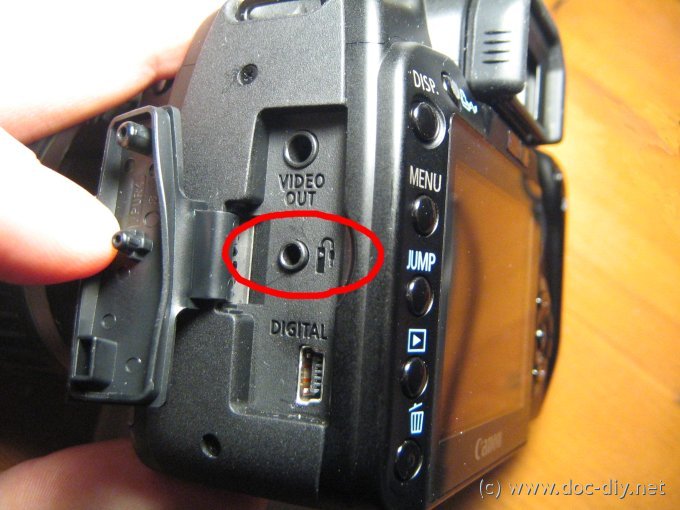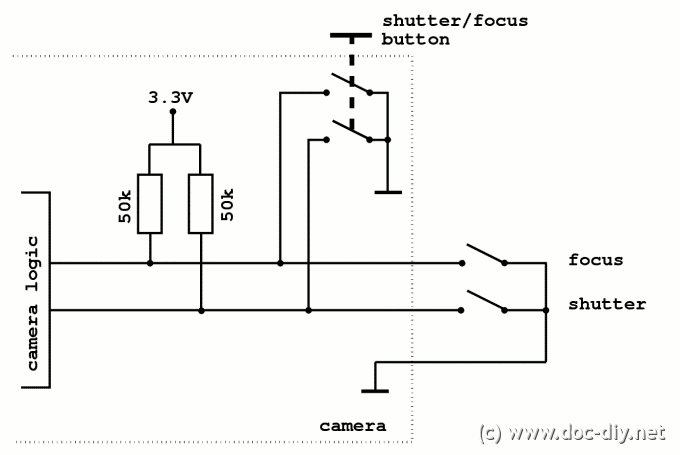DIY wired remote control for Canon EOS cameras

The EOS series of cameras from Canon offer a nice feature which is of
particular interest for DIYers and technically oriented photographers.
It is possible to trigger these cameras externally using an electrical
signal. To the hobbyist's delight Canon used no special protocol to trigger
the camera - you just have to short-circuit two wires.
Knowing this, building a homebrew Canon RS-60E3 wired remote control clone
is a snap! Or maybe an interval trigger, or a microcontroller based...
Pinout 350D, 400D, 450D, 500D, 550D, 600D, 650D, 700D, 60D, 70D
The external trigger can be accessed with a stereo (3 pole) 2.5 mm jack plug. It is not the standard plug used in mp3-players etc. which has a diameter of 3.5 mm! But don't worry, you can buy the smaller plug in any bigger electronics store. The pinout is shown in the picture below.

Connecting the focus-wire (ring) with ground (sleeve) corresponds to pressing the shutter button halfway down and results in focusing the camera. Accordingly, connecting the shutter-wire (tip) to ground (sleeve) corresponds to pressing the shutter button all the way down. In this case the camera is first focused and then triggered if the focusing was successful. In manual-focus mode the camera is triggered instantly.
Pinout 20D, 30D, 40D, 50D, 1D, 5D, 6D, 7D,...
The double and single digit Canon cameras have a different connector (for whatever reason). Canon calls it the N3-connector. The only way to get the connector is to cannibalise a cheap wired remote control. The electrical circuit behind the connector equivalent to the xxxD types.

Electrical characteristics
I measured the electrical characteristics of the wired remote control connector on a Canon EOS 400D and 40D. The values are equal for both models. They are listed in the following table
| Voltage (no load) | 3.3 V |
| Threshold voltage | 1.8 V |
| Short circuit current | 68 µA |
| Current at threshold voltage | 30 µA |
The shutter and focus inputs have the same electrical characteristics and work independently. The remote control port and the shutter button seem to share the same wires. Pushing the shutter button results in a voltage drop to 0 V at the external shutter or focus wire. A possible equivalent circuit for the trigger circuitry might look like this

If the camera is in stand-by mode, there is a voltage present at the focus wire.
The camera can be waken up from stand-by by connecting the focus wire to ground.
The trigger inputs can serve as power supply for circuits with a supply current of less than
30 µA like the HDR-Jack.
Comments (3)
PHP Scripts Disposable Email Temporary Email





